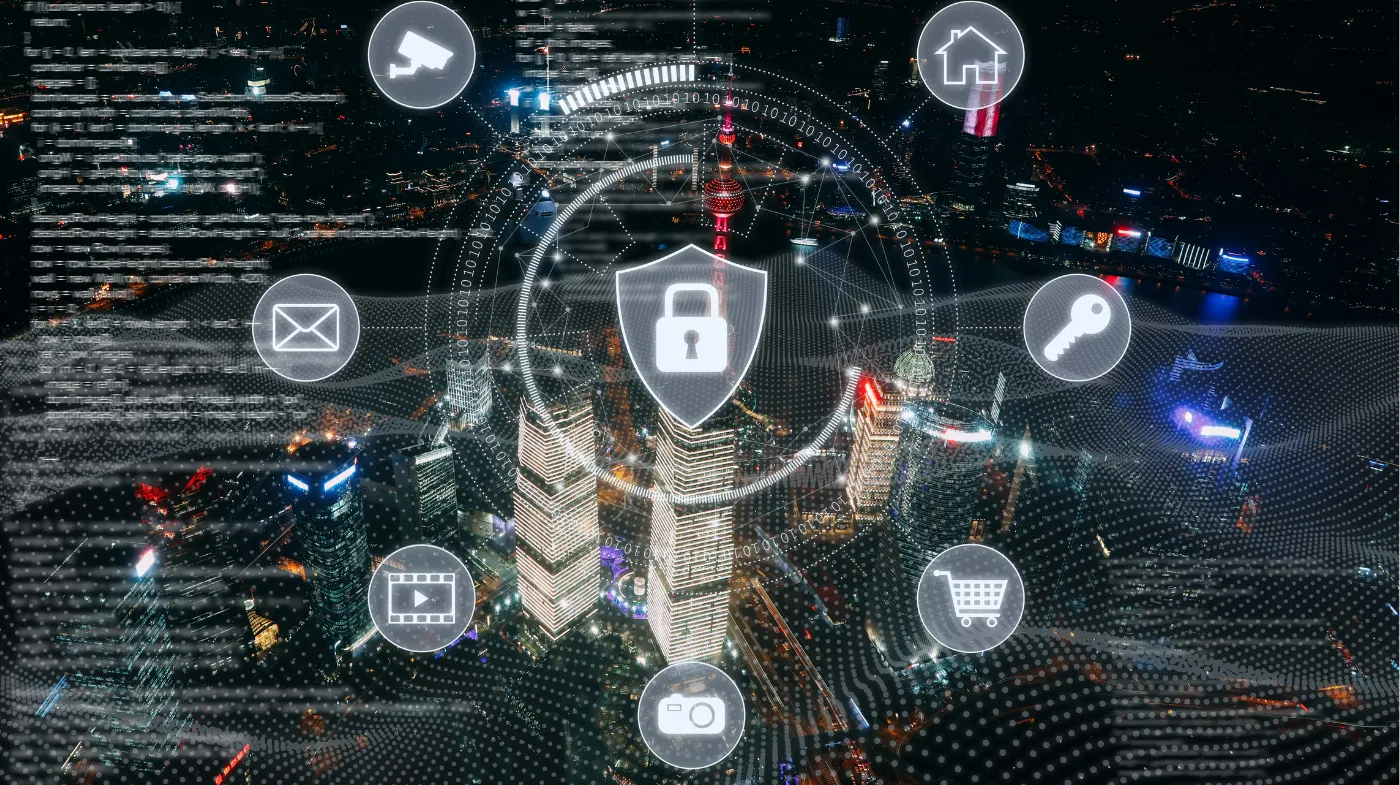
Cybercriminals steal personal data from mobile devices every 18 seconds, yet most people carry smartphones with weaker security than their home Wi-Fi routers.
Your phone contains more sensitive information than your wallet, bank statements, and personal diary combined, making it the ultimate target for digital thieves.
This comprehensive guide reveals the hidden security features that separate truly secure devices from vulnerable ones, exposes the encryption technologies that protect your most private data, and shows you exactly which authentication methods actually work against modern threats.
You’ll discover why hardware-level protection matters more than fancy apps, learn how enterprise-grade security can shield your personal life, and uncover the specific features that security experts demand in their own devices.
Mobile Device Security Fundamentals
Security in mobile devices encompasses multiple layers of protection working together to safeguard your data.
Hardware-Level Security
Secure elements form the foundation of mobile security. These dedicated chips store encryption keys and handle sensitive operations independently from the main processor. They provide tamper-resistant environments that make it extremely difficult for attackers to extract critical information.
Biometric sensors, including fingerprint readers and facial recognition systems, offer convenient yet secure authentication methods. These sensors use advanced algorithms to create unique digital representations of your physical characteristics.
Software Security Architecture
Operating system security relies on sandboxing technology that isolates applications from each other and system resources. This prevents malicious apps from accessing sensitive data or compromising other applications.
Code signing ensures that only authorized software can run on your device. This process verifies the authenticity and integrity of applications before installation.
To further enhance protection, use a free strong password generator to create high-entropy passwords that reduce the risk of unauthorized access to apps and services.
Advanced Encryption Technologies

Modern encryption methods protect data both at rest and in transit, forming the backbone of mobile security.
End-to-End Encryption
Message encryption scrambles communications so only intended recipients can read them. This protection extends beyond text messages to include voice calls, video chats, and file transfers.
File system encryption protects stored data using advanced algorithms that make information unreadable without proper authentication credentials.
Secure Key Management
Hardware security modules generate and store encryption keys in isolated environments. These systems ensure that even if software is compromised, cryptographic keys remain protected.
Key derivation functions create strong encryption keys from user passwords and PINs, making brute-force attacks computationally infeasible.
Authentication and Access Control
Robust authentication systems prevent unauthorized access while maintaining user convenience.
Multi-Factor Authentication
Biometric authentication combines something you are (fingerprint, face, voice) with something you know (password, PIN) for enhanced security. This dual-layer approach significantly reduces the risk of unauthorized access.
Hardware tokens provide additional authentication factors through specialized security keys or smart cards integrated into the device architecture.
Password Security Management
Effective cybersecurity requires strong passwords that resist common attack methods. Modern devices include built-in password managers that generate and store complex credentials securely.
Password generators create random, high-entropy passwords that are virtually impossible to guess. These tools often include customizable parameters for length, character sets, and complexity requirements.
Network Security and Communication Protection
Secure communication protocols protect data transmission between devices and servers.
VPN Integration
Built-in VPN capabilities encrypt internet traffic and mask device locations. This protection is essential when using public Wi-Fi networks or accessing sensitive information remotely.
Secure DNS prevents DNS poisoning attacks and ensures that domain name resolutions are legitimate and protected.
Wireless Security Protocols
WPA3 encryption provides the latest wireless security standards with improved protection against dictionary attacks and enhanced encryption algorithms.
Bluetooth security implements advanced pairing mechanisms and encryption protocols to prevent unauthorized device connections and data interception.
Privacy Controls and Data Protection
Comprehensive privacy features give users control over their personal information.
Application Permissions
Granular permission systems allow users to control exactly what data applications can access. This includes location information, contacts, camera, microphone, and storage permissions.
Permission auditing provides regular reviews of app permissions and alerts users to potentially suspicious access requests.
Data Minimization
Local processing keeps sensitive data on the device rather than uploading it to cloud servers. This approach reduces privacy risks and improves response times for certain operations.
Anonymization techniques strip identifying information from data before transmission, protecting user privacy while enabling necessary functionality.
Security Updates and Patch Management
Regular security updates address newly discovered vulnerabilities and enhance existing protection mechanisms.
Automatic Update Systems
Over-the-air updates deliver security patches directly to devices without requiring manual intervention. This ensures that critical vulnerabilities are addressed promptly.
Modular update architecture allows security components to be updated independently of the main operating system, reducing update complexity and improving deployment speed.
Vulnerability Response
Security research programs identify and address potential threats before they can be exploited maliciously. These initiatives often include bug bounty programs and responsible disclosure processes.
Rapid response capabilities enable quick deployment of emergency patches when critical vulnerabilities are discovered.
Tools like a password strength tester also play a vital role by helping users evaluate and improve the security of their credentials before breaches occur.
Enterprise and Business Security Features

Professional environments require additional security measures beyond consumer-grade protection.
Mobile Device Management
Remote administration allows IT departments to configure security policies, install approved applications, and monitor device compliance with organizational standards.
Data loss prevention implements policies that prevent sensitive business information from being inappropriately shared or accessed by unauthorized users.
Compliance and Certification
Security certifications validate that devices meet industry standards for data protection and privacy. These certifications are often required for use in regulated industries.
Audit trail capabilities maintain detailed logs of device activities, enabling forensic analysis and compliance reporting when necessary.
Choosing the Right Security Features
Selecting appropriate security features depends on your specific needs and threat model.
Personal Use Considerations
Convenience versus security balance is crucial for personal devices. Features should provide robust protection without creating unnecessary friction in daily usage.
Backup and recovery systems ensure that security measures don’t result in permanent data loss if authentication credentials are forgotten or compromised.
Professional Requirements
Industry-specific needs vary significantly between sectors. Healthcare, finance, and government organizations have unique security requirements that must be addressed.
Scalability considerations become important for organizations managing multiple devices with consistent security policies.
Frequently Asked Questions
What makes a phone truly secure?
A secure phone combines hardware-level protection, advanced encryption, robust authentication methods, and regular security updates.
The most secure devices integrate specialized security chips, implement end-to-end encryption, and provide granular privacy controls.
How often should security features be updated?
Security updates should be installed immediately when available. The most secure devices receive monthly security patches, with critical vulnerabilities addressed through emergency updates. Automatic update systems help ensure timely protection against emerging threats.
Are biometric authentication methods reliable?
Modern biometric systems are highly reliable and secure when properly implemented. They use advanced algorithms and secure hardware to protect biometric data.
However, combining biometrics with traditional passwords or PINs provides the strongest authentication security.
What role do 4-digit random number generators play in phone security?
Random number generators, including 4-digit random number generators, create unpredictable values used in encryption keys, authentication tokens, and security protocols. These generators ensure that cryptographic operations use truly random data, making them resistant to prediction attacks.
Choose Your Phone with Security in Mind
Choosing the most secure phone requires understanding the complex interplay between hardware security, software protection, and user behavior.
The devices that offer the best protection combine specialized security chips, advanced encryption, robust authentication systems, and comprehensive privacy controls.
Remember that security is an ongoing process, not a one-time purchase decision. Regular updates, careful app selection, and mindful usage habits are equally important as the initial device choice.
By prioritizing security features and maintaining good digital hygiene, you can significantly reduce your risk of becoming a victim of mobile security threats.
